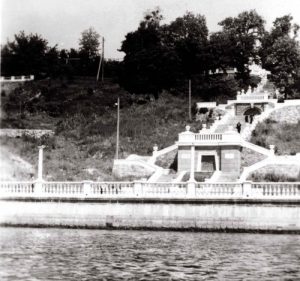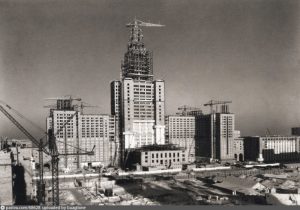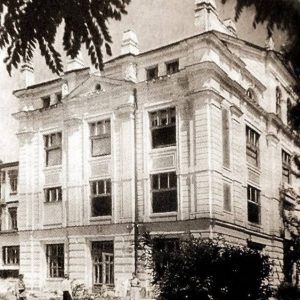Technological University since 1996. ZSTU is one of the main centers of mining education and science of Ukraine. It is connected first of all with the great mineral wealth of Zhytomyr and outstanding personalities who had a significant influence on the development of mining. One of these leaders was Vaclav Dlouhi and the Center for Czech education and culture named after him.
Vaclav Dlouhi (in Czech – Dlugy, that is long) was a prominent stonemason, a Czech by nationality, who left many outstanding buildings and architectural monuments not only in Zhytomyr, but all over the former Soviet Union. Unfortunately there was very little information about the life of a prominent mason. Dates of birth and death are unknown. We only know that he was born in Zhytomyr, where he grew up and began his career, inheriting the profession of a mason from his father – Joseph Dlouhi. He lived and worked on the Vilsko-Shoseyna street (now Victory street in the district of the Korolenko square ). Five of the six stone workshops were situated there.
Major architectural monuments in Zhytomyr built in 1912 are “The stairs of the earls” in the Gagarin Park. It was Vaclav Dlouhi who on the order of Baron Ivan Maksimilianovich de Shoduar cut and fitted 182 steps that lead from the Park to the waterfront of Teteriv river. Zhytomyr “stairs of the earls” are only 10 steps shorter than the famous Potemkin’s stairs in Odessa.

There is every reason to assume that the tomb in Lutheran cemetery, where Baron de Shoduar was buried, is also faced with the stone processed by Vaclav Dlouhi.
Joseph and Vaclav Dlouhi left many attractive monuments and gravestones at two largest cemeteries of Zhytomyr. They are considered to be works of art. Thus, the Catholic (Polish) cemetery preserved 46 monuments. The first monument is dated by 1889, the latest by 1927.
Mining and processing of stone for the third reconstruction of the Mausoleum of Lenin took place under the guidance and support of Vaclav Dlouhi in 1930 (the first two mausoleums were made of wood). During the reconstruction an outstanding mason was invited to Moscow, where under his technical guidance, the masons of Zhytomyr region made a final processing of units and their polishing. They set fitted blocks and plates as well. After the completion of construction of the Mausoleum, Dlouhi was invited to work in the people’s Commissariat of building materials, then in the management of the construction of the Palace of Soviets. After the war Vaclav got involved with enthusiasm in the construction of the main building of Moscow State University.

From the first to the last day of construction Dlouhi guided the work in which ornamental granite was used. He was almost 80 at that time.

Unfortunately a lot of buildings and stone monuments made by Vaclav Dlouhi in Zhytomyr have not been preserved.
Not everyone is lucky enough to leave behind such a vivid trace: the Mausoleum, bridges and embankments in one of the largest cities in the world, the world-famous University. They are a kind of “stone autographs” in Moscow and Zhytomyr.
(Information about Vaclav Dlouhi and his achievements is made public thanks to research and publications by a prominent local historian George Mokrytsky).
